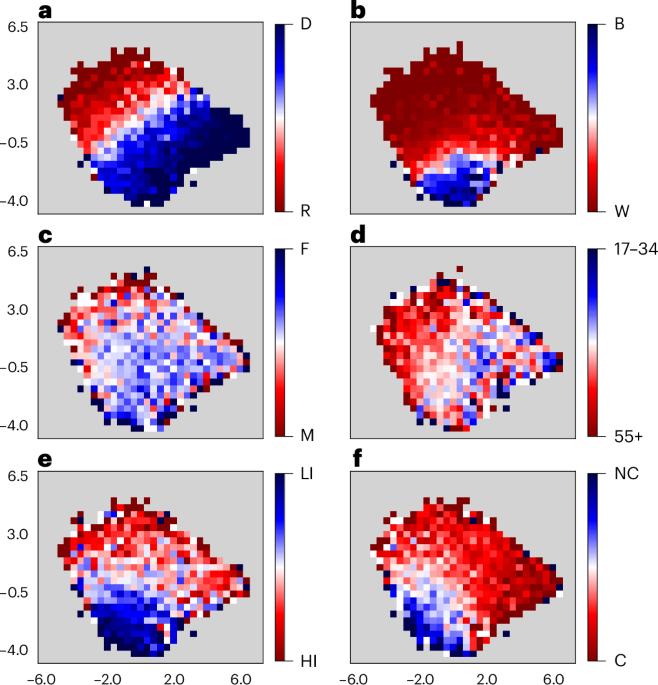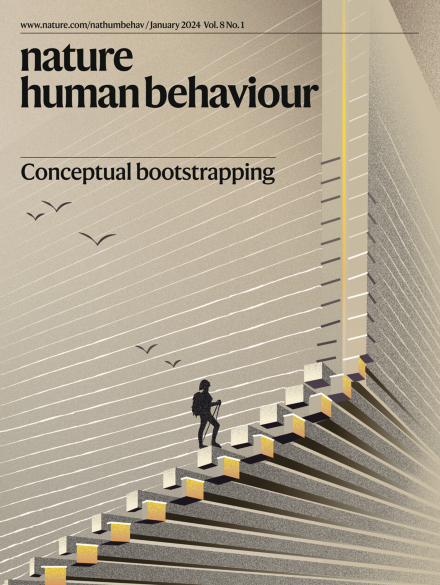Charting multidimensional ideological polarization across demographic groups in the USA
IF 15.9
1区 心理学
Q1 MULTIDISCIPLINARY SCIENCES
引用次数: 0
Abstract
Has ideological polarization actually increased in the past decades, or have voters simply sorted themselves into parties matching their ideology more closely? Here we present a methodology to quantify multidimensional ideological polarization by embedding the respondents to a wide variety of political, social and economic topics from the American National Election Studies into a two-dimensional ideological space. By identifying several demographic attributes of the American National Election Studies respondents, we chart how political and socioeconomic groups move through the ideological space in time. We observe that income and especially racial groups align into parties, but their ideological distance has not increased over time. Instead, Democrats and Republicans have become ideologically more distant in the past 30 years: Both parties moved away from the centre, at different rates. Furthermore, Democratic voters have become ideologically more heterogeneous after 2010, indicating that partisan sorting has declined in the past decade. Ojer et al. use data from the American National Election Studies to map US voters in a two-dimensional ideological space. Democrats and Republicans have grown more polarized over the past 30 years, while partisan sorting has declined since 2010.


绘制美国人口群体中多维意识形态两极分化的图表
在过去的几十年里,意识形态的两极分化真的加剧了吗?还是选民们只是把自己归入了与自己的意识形态更接近的政党?在这里,我们提出了一种量化多维意识形态极化的方法,方法是将受访者对美国全国选举研究中各种各样的政治、社会和经济主题的了解嵌入到二维意识形态空间中。通过确定美国全国选举研究受访者的几个人口统计属性,我们绘制了政治和社会经济群体如何在时间上通过意识形态空间移动的图表。我们观察到,收入群体,尤其是种族群体倾向于政党,但他们的意识形态距离并没有随着时间的推移而增加。相反,在过去的30年里,民主党和共和党在意识形态上变得越来越疏远:两党都以不同的速度远离了中间路线。此外,民主党选民在2010年之后在意识形态上变得更加异质,这表明过去十年中党派划分有所减少。
本文章由计算机程序翻译,如有差异,请以英文原文为准。
求助全文
约1分钟内获得全文
求助全文
来源期刊

Nature Human Behaviour
Psychology-Social Psychology
CiteScore
36.80
自引率
1.00%
发文量
227
期刊介绍:
Nature Human Behaviour is a journal that focuses on publishing research of outstanding significance into any aspect of human behavior.The research can cover various areas such as psychological, biological, and social bases of human behavior.It also includes the study of origins, development, and disorders related to human behavior.The primary aim of the journal is to increase the visibility of research in the field and enhance its societal reach and impact.
 求助内容:
求助内容: 应助结果提醒方式:
应助结果提醒方式:


